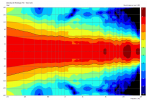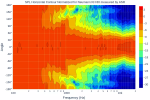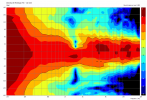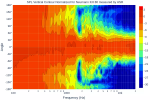Many mastering studios use large in-wall mounted loudspeakers which by default have ...
Exactly, no argument about this. Good point for the camp of "less reflection (in the lower mids) is better". (That is why I asked for in-wall above ;-)
Neutral direct sound, and reflected sounds which spectrally match it is the only logical goal to strive for, imo.
Alas, "the score" and with it the suggested standardization follow another route, me thinks.
Again beating the dead horse:
Harman's recommendations aims at the consumer market. Designs shall be kept practical regarding placement, cost, looks etc. Less complication, more sales.
For me personally it boils down to a notion like this, and I feel it cannot be said too often:
stereo / fidelity is a thing generated in the studio, especially there is nothing in the primary recording that is 'naturally original'
stereo / fidelity is a matter of taste, first of all taste of the sound engineer, especially the taste cannot be disputed
stereo / fidelity is best preserved if play-back at home replicates the sound engineer's experience, especially regarding important parameters
So, if the s/e would evaluate the recording / mix using more traditional speakers, and finally would say "well, that's done", that would be it.
In consequence, in order to introduce narrow-dispersion-in-the-lower-mids speakers, You better first convince sound engineers to use them. Then sound engineers have to convince consumers, that the effort--and there is a lot!, is worth it.
Reiterated, the more narrow dispersion first has to add something completely new to the s/ engineer's toolbox to justify itself.
You say: "more punch"
Sound engineer: "can be done with a slight turn on the equalizer too"
You say: "more defined room"
Sound engineer: "got my reverberation add-on already"
... and so on ...
Once I have my down-sized experimental 'cardioid', i'll give note in the DIY section, o/k?





